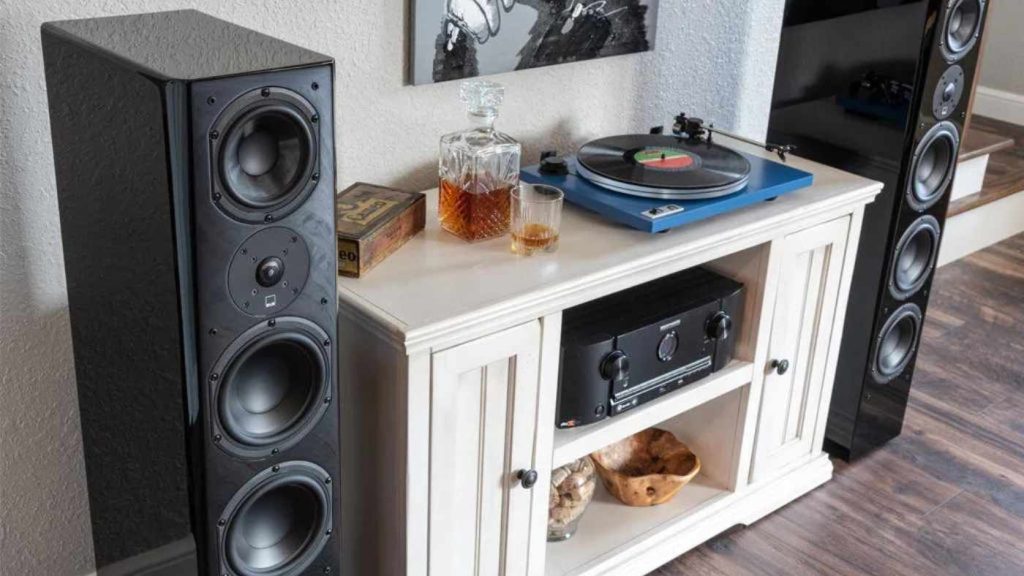Welcome to the world of home stereo systems, where nostalgia and innovation collide! Picture yourself sitting in your favorite armchair, surrounded by the warm sound of music filling every corner of your room.
Ah, doesn’t that take you back? But wait, there’s more to this story than just reminiscing about the good old days.
In this blog post, we will dive into the captivating evolution of home stereo technology. From its humble beginnings as a simple radio receiver to today’s cutting-edge audio systems, we’ll explore how advancements have shaped our listening experiences over time.
So buckle up and get ready for a journey through musical history as we discuss both vintage classics and modern marvels that make our hearts sing.
Whether you’re an audiophile searching for that perfect balance between nostalgia and innovation or simply curious about how far we’ve come in the realm of home audio technology, this article is bound to strike a chord with you.
So let’s crank up those speakers and embark on a sonic adventure together!
The history and evolution of home stereo technology
The history and evolution of home stereo technology is a fascinating journey that has brought us from the humble beginnings of mono sound to the immersive audio experiences we enjoy today. It all started back in the early 20th century when radio broadcasts became popular, and people began craving a way to bring that same audio magic into their homes.
In the 1950s, stereo sound emerged as a game-changer, giving listeners the ability to experience music in a whole new dimension. Dual-channel speakers created depth and separation, making it feel like you were right there in the concert hall or studio with your favorite artists.
As time went on, advancements in technology allowed for smaller components without sacrificing audio quality. Compact cassette tapes burst onto the scene in the 1960s, offering convenient playback options for music lovers everywhere.
This was followed by CD players in the 1980s, which revolutionized how we consumed music at home.
Fast forward to today’s digital age where streaming services have taken center stage. With just a few taps on our smartphones or voice commands to smart speakers, we can access an endless library of songs from around the world.
Home stereo systems have adapted accordingly with wireless connectivity and integration with popular streaming platforms.
But despite these modern innovations, there is still an undeniable charm associated with vintage stereo equipment. Many audiophiles seek out classic turntables and tube amplifiers for their warm analog sound signature.
These nostalgia-driven enthusiasts appreciate not only how these older devices look but also how they make their favorite records come alive.
Whether you’re drawn to vintage gear or prefer cutting-edge technology, choosing the right home stereo system ultimately comes down to personal preference and budget considerations. Do you value convenience above all else?
Are you willing to invest extra time and effort into setting up separate components? Answering these questions will help guide your decision-making process.
In conclusion (without using those exact words), it’s clear that while advancements continue to shape the world of home stereo technology, nostalgia and innovation can coexist.
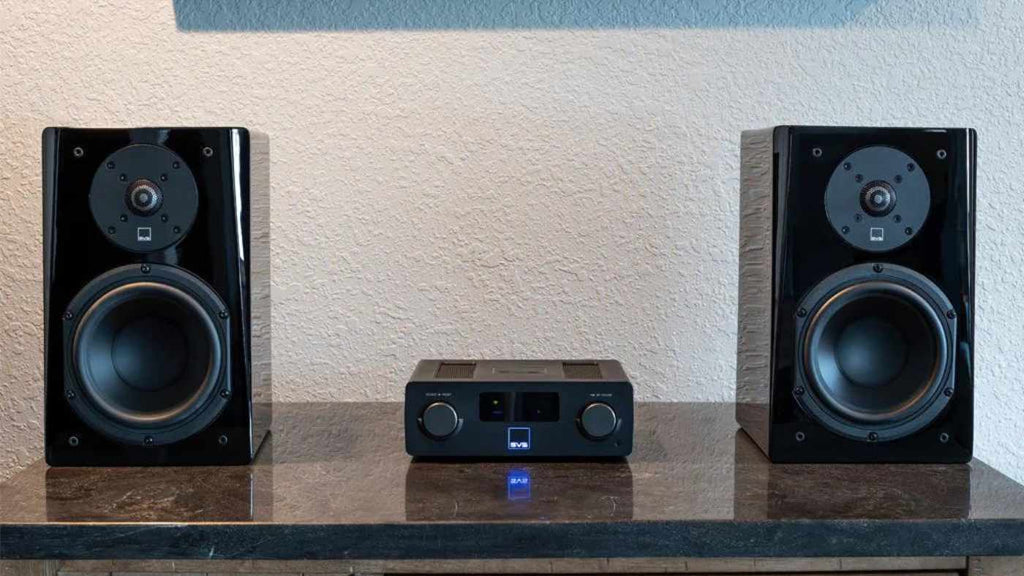
Nostalgia and the resurgence of vintage stereo equipment
Nostalgia is a powerful force, transporting us to a time when things were simpler and music was experienced in a different way. In recent years, there has been a noticeable resurgence of interest in vintage stereo equipment, as people yearn for the warm sound and tactile experience that only analog technology can provide.
The appeal of vintage stereo systems lies not just in their aesthetic charm but also in the craftsmanship and attention to detail that went into their design. From the elegant wood veneer cabinets to the large knobs and dials, these devices exude a sense of nostalgia that is hard to replicate with modern technology.
But it’s not just about looks – vintage audio gear also offers an unparalleled listening experience. Vinyl records played on turntables have made a comeback, with their distinct warmth and crackle creating an immersive auditory experience that digital formats simply cannot reproduce.
Moreover, many audiophiles argue that older speakers have a unique character and depth of sound. They believe that vintage amplifiers and receivers produce richer tones compared to their contemporary counterparts.
In response to this renewed interest in vintage audio equipment, manufacturers are now producing modern versions with retro designs. These new models combine classic aesthetics with updated features like Bluetooth connectivity or USB ports for playing digital files.
Whether you’re seeking out original vintage gear or opting for one of these modern recreations, exploring the world of vintage stereo equipment allows you to rediscover music in all its analog glory. So dust off those vinyl records or cassette tapes – it’s time for your favorite albums to come alive again!
Modern innovations in home stereo systems
Modern innovations in home stereo systems have revolutionized the way we listen to music. Gone are the days of bulky, cumbersome equipment that took up half of our living rooms.
Today’s home audio technology is sleek, compact, and packed with cutting-edge features.
One of the most notable advancements in recent years is wireless connectivity. With Bluetooth and Wi-Fi capabilities, you can now stream your favorite tunes from your smartphone or tablet directly to your stereo system. No more dealing with tangled cords or limited listening options – just seamless streaming at the touch of a button.
Another exciting innovation is multi-room audio systems. These setups allow you to synchronize music throughout your entire house or play different songs in each room simultaneously.
Imagine hosting a party where guests can enjoy their favorite tracks no matter where they are!
Voice control has also made its way into modern home stereo systems. Thanks to virtual assistants like Amazon Alexa and Google Assistant, you can simply use voice commands to play specific songs, adjust volume levels, or even switch between different streaming services.
In addition to these technological advancements, manufacturers have also focused on improving sound quality. High-resolution audio formats such as FLAC (Free Lossless Audio Codec) deliver studio-quality sound right in your own living room.
With so many innovative features available today, choosing the right home stereo system can be overwhelming. Consider factors like your budget, space limitations, and desired functionality before making a decision.
Whether you’re a casual listener or an audiophile seeking perfection in every note, there’s undoubtedly a modern home stereo system out there that will meet all of your needs – while still providing that nostalgic nod to the past!
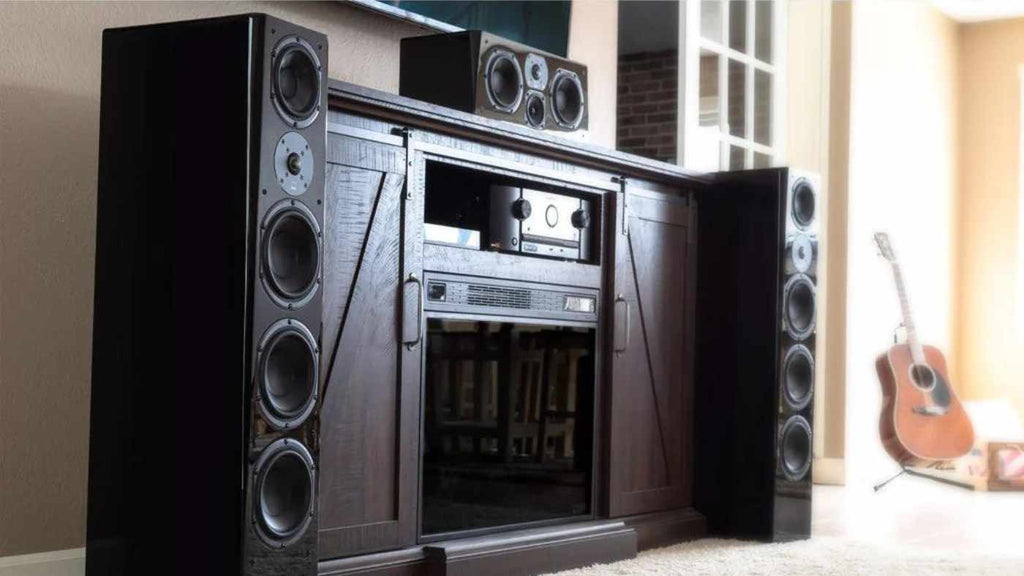
How to choose the right home stereo system for your needs
When it comes to choosing the right home stereo system, there are a few key factors to consider. First and foremost, think about your specific needs and preferences.
Are you a audiophile who craves high-quality sound? Or are you simply looking for something that will enhance your movie-watching experience?
Next, take into account the size of your space. A smaller room may not require as robust of a system as a larger area.
Consider the dimensions and layout when selecting speakers and components.
Another important consideration is connectivity options. Do you primarily listen to music through streaming services or do you have an extensive vinyl collection?
Make sure the system you choose has compatibility with your preferred audio sources.
Additionally, think about whether you want a traditional wired setup or if wireless capabilities are more appealing to you. Wireless systems offer convenience and flexibility in terms of placement but may sacrifice some audio quality.
Don’t forget about budget! There’s no need to break the bank on a home stereo system unless it truly aligns with your priorities.
By carefully evaluating these factors, you’ll be well-equipped to choose a home stereo system that perfectly suits your needs and enhances your listening experience. So go ahead, dive into the world of home audio technology – there’s never been a better time to find your perfect match!
The impact of streaming services on home audio technology
Streaming services have completely revolutionized the way we consume and enjoy music in our homes. With just a few clicks, we now have access to millions of songs from all genres and eras, right at our fingertips.
This accessibility has had a significant impact on home audio technology, pushing it to adapt and evolve.
Gone are the days of cluttered CD collections or stacks of vinyl records. Streaming services have made physical media almost obsolete for many people.
Instead, all you need is a reliable internet connection and a streaming device to enjoy your favorite music in high quality.
The rise of streaming has also led to advancements in wireless audio technology. Bluetooth speakers and Wi-Fi-enabled systems allow us to effortlessly stream music from our smartphones or tablets without the need for any cables or connectors.
Moreover, streaming services have brought about an increased emphasis on convenience and customization. Playlists curated by experts or tailored specifically to individual preferences make it easier than ever before to discover new artists or create personalized soundtracks for different moods or occasions.
These developments in home audio technology have not only made listening more convenient but also elevated the overall sound quality experience. Many modern stereo systems now support high-resolution audio formats that ensure every note is crisp, clear, and immersive.
In conclusion (not concluding), streaming services continue to reshape home audio technology as they become increasingly popular among consumers worldwide. And with constant advancements being made in both streaming platforms and hardware devices, we can expect even more exciting innovations in the future!
Feauturing: Stereos in Dreamedia

Eversolo – DMP-A6
Experience the ultimate in sound quality with the Eversolo – DMP-A6, a digital music player designed for true audiophiles. Its heart beats with a powerful quad-core processor and ample memory, ensuring smooth playback of high-resolution audio files. Embrace lossless music in formats like FLAC and ALAC, delivered through dual professional-grade DAC chips for unmatched clarity.
The device also features MQA technology, bringing studio-quality sound to your ears. A 6-inch HD touchscreen offers intuitive control, while multiple connectivity options, including HDMI, USB, and an internal SSD slot for up to 2TB of storage, make it versatile.
Its EOS audio engine, low-ripple power module, and sturdy aviation aluminum chassis ensure superior sound fidelity and durability. Customize your experience with digital filters and VU meters, and enjoy seamless integration with music services like Tidal and Spotify.
The DMP-A6 is a testament to the art of sound, merging top-notch technology with user-friendly features for an unmatched auditory experience.
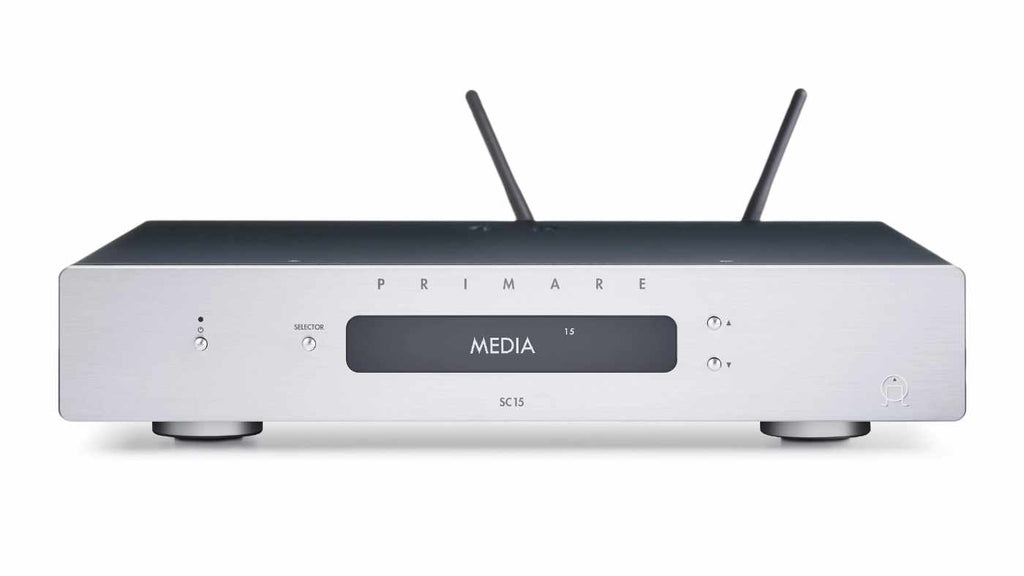
Primare SC15 Prisma Preamp
The Primare SC15 Prisma Preamp, elegantly designed for modern compact living, is the epitome of audio excellence and technological innovation. It’s a versatile hub for your home audio, offering extensive connectivity through RCA, optical Toslink, coaxial, and USB ports, and streaming capabilities via Ethernet, Wi-Fi, and Bluetooth with services like Tidal and Spotify.
At its heart lies the AKM AK4490 DAC chip, supporting up to 32-bit/384kHz PCM and DSD128 for unparalleled audio clarity. Customize your experience with adjustable gain and volume settings, and enjoy multi-room audio with Chromecast, AirPlay 2, and Roon.
The SC15 Prisma, with its sleek black aluminum design and intuitive Prisma app, is not just a preamp but a statement in your smart home, blending high-fidelity sound with modern aesthetics and functionality.
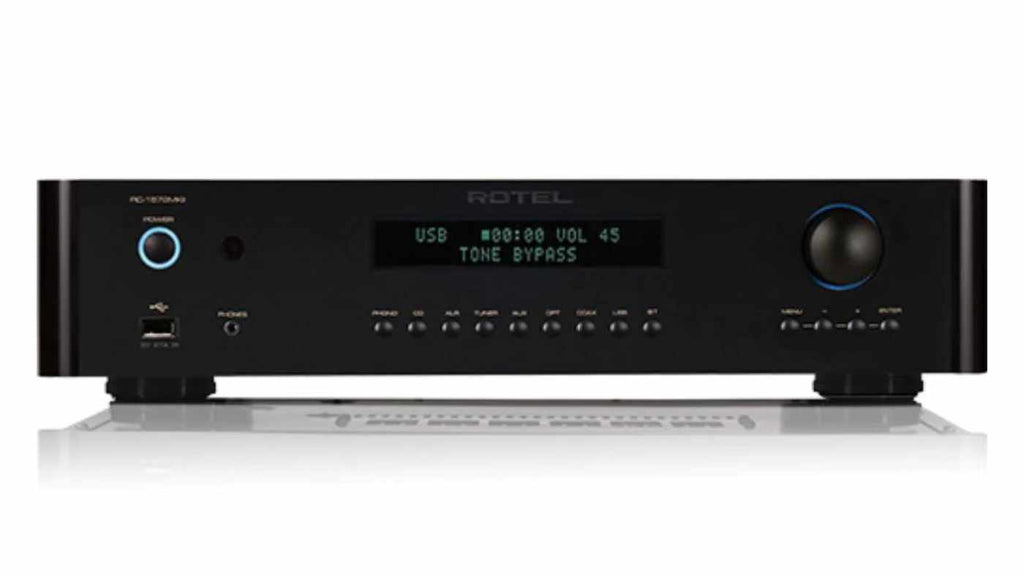
Rotel RC-1572MKII Stereo Preamplifier
The Rotel RC-1572 MKII Stereo Preamplifier is a marvel in the world of high-fidelity audio, blending cutting-edge technology with exceptional design. It features a premium Texas Instruments 32-bit/384kHz DAC, ensuring meticulous conversion of digital audio to analog, complemented by custom-tuned output filters for a crystal-clear and richly textured sound.
The heart of its performance lies in its ultra-low-noise power supply with a large, custom-made toroidal transformer, delivering stable, interference-free energy. This preamplifier isn’t just about sound quality; it offers seamless integration into your life with numerous source controls, including Balanced XLR inputs, wireless Bluetooth support, USB connectivity for direct iOS device playback, and a dedicated Moving Magnet Phono Input.
It’s also Certified Roon Tested, supporting high-resolution MQA and MQA Studio files for studio-quality home listening. The RC-1572MKII, with its robust design featuring a brushed aluminum front panel, and user-friendly interface, including remote control operation, represents a commitment to audio excellence.
It provides versatile connectivity options, including RCA, XLR, and subwoofer outputs, and is designed for flexibility with Ethernet and RS232 integration. This preamplifier not only connects generations of music and music lovers but also bridges the gap between analog and digital worlds, making it an essential component in any Hi-Fi audio setup.

Michi – X3 Series 2 Integrated Amplifier
Discover the Michi X3 Series 2 Integrated Amplifier, an exemplar of audio engineering and design. This amplifier seamlessly combines power, precision, and versatility to elevate your listening experience. At its core, the X3 Series 2 boasts a robust amplification system, delivering detailed and dynamic sound across a wide range of speakers.
It’s not just powerful but also smart, with advanced circuitry ensuring minimal distortion and maximum audio fidelity. The X3 Series 2 is a hub of connectivity, accommodating a variety of audio sources with its multiple analog and digital inputs, including a high-quality phono stage for vinyl enthusiasts.
The built-in high-resolution DAC supports a vast array of digital formats, ensuring your digital music is as crisp and clear as live performances. Its elegant design with a sleek, modern aesthetic complements any home audio setup, making it a centerpiece that’s as visually appealing as it is sonically.
The Michi X3 Series 2 represents a fusion of technical excellence and practical functionality, providing an immersive audio experience that resonates with both audiophiles and casual listeners alike, and making it a worthy addition to any high-end audio system.
Conclusion: Balancing nostalgia and innovation in the world of home stereo
The evolution of home stereo systems has been nothing short of remarkable. From the days of simple mono systems to today’s immersive surround sound setups, technology has truly transformed the way we experience music in our homes.
But amidst all the advancements and innovations, one thing remains clear – nostalgia for vintage stereo equipment is still very much alive.
For many audiophiles and music lovers, there is an undeniable charm in owning a piece of history. The warm tones and tactile controls of vintage amplifiers, turntables, and speakers evoke a sense of nostalgia that simply cannot be replicated by modern counterparts.
And with a resurgence in popularity, these classic components are finding their way back into living rooms around the world.
However, it would be remiss to overlook the incredible strides made by modern home audio technology. With features like wireless connectivity, voice control integration, and high-resolution audio support, contemporary stereo systems offer convenience and performance that was unimaginable in decades past.
Streaming services have also revolutionized how we access music, providing virtually limitless choices at our fingertips.
So how do we strike a balance between embracing nostalgia and embracing innovation? It ultimately comes down to personal preference and priorities.
Some may choose to build their own vintage setup for its aesthetic appeal or as a hobbyist pursuit. Others may opt for cutting-edge technology that seamlessly integrates with their smart homes.
